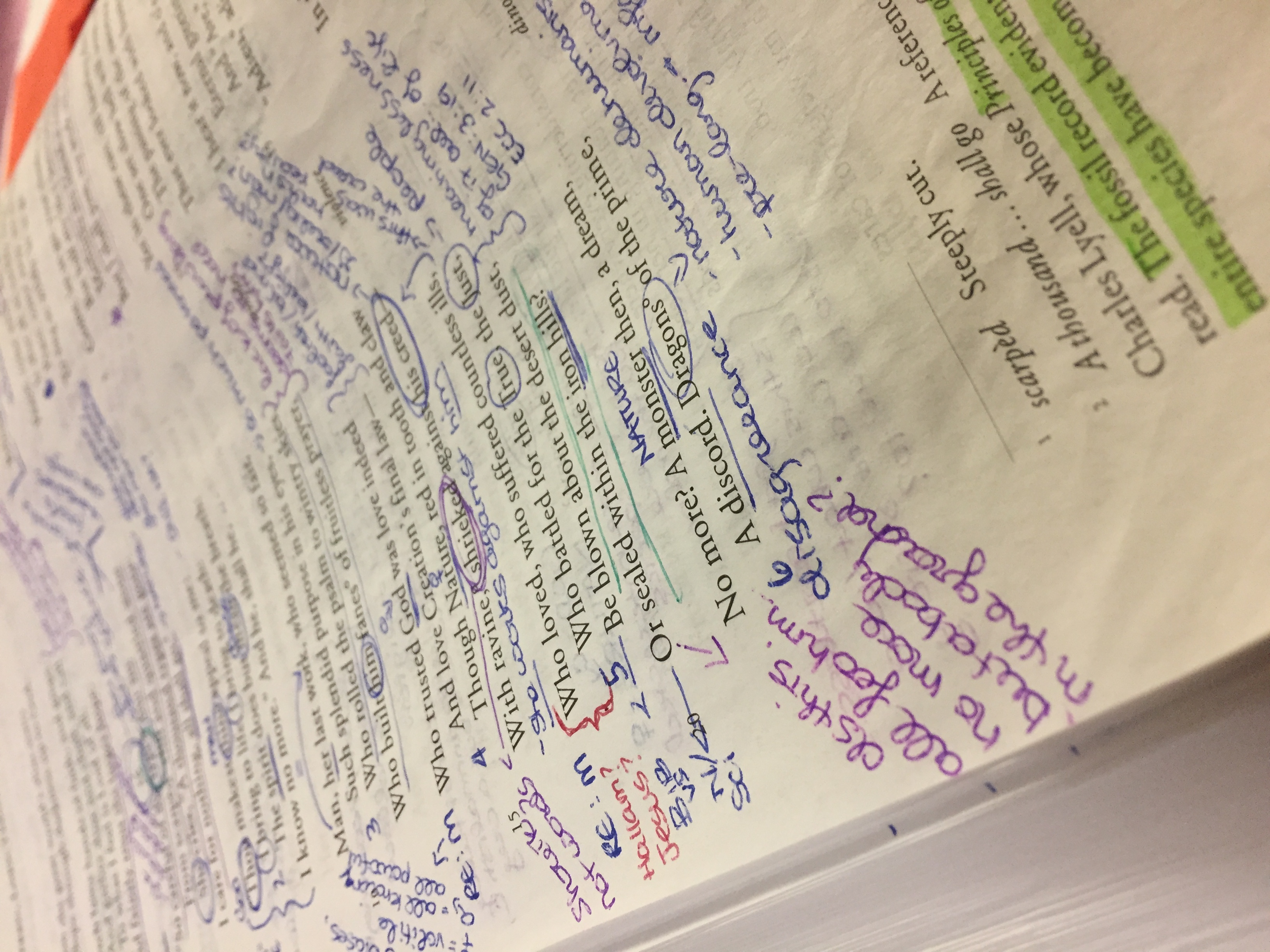The Poetic Life-Form: An Analysis on the Role of Elegy and Form in In Memoriam
Keywords:
elegy, life-form, form, evolution, Tennyson, image, impression, abstraction, species, specimen, memory, mourningAbstract
What is the role of elegy? Can literary works preserve the memory of a person, moment, or time that has been lost? Or, is this simply a feeble attempt to console those suffering from grief and loss? Alfred Lord Tennyson explores these questions in his work In Memoriam A.H.H. The heart of the work, as in any elegy, is mourning a loss and preserving the memory of that loss. Jesse Oak Taylor works specifically with the idea of elegy and what it does for our ecologically conscious society through the Anthropocene. He argues that we cannot actually experience the concept of species; we only ever experience impressions of it. Thus in order to cope, society uses elegy as a form of expression to process extinction and preserve an image (228). In a similar fashion, cantos fifty-four to fifty-seven of In Memoriam exemplify Tennyson’s use of elegy and evolutionary concepts, but instead of mourning a “species” the poet mourns the loss of his friend, Arthur Henry Hallam. More than that, these cantos represent Tennyson’s desperate attempt to move beyond preservation of Hallam’s memory. Through In Memoriam, Tennyson attempts to recreate and clone the memory of Hallam, using the elegiac form to perpetuate his friend’s life and existence. His resulting work is not a sterile clone, but an act of cultural reproduction and the birth of a new life-form through literature.
References
Literature: The Victorian Era</em>, 2nd ed., edited by Joseph Black et al., Broadview Press, 2012, p. 263-272.
Ferneaux, Holly. “An Introduction to In Memoriam A.A.H.” <em>Discovering Literature:
Romantics and Victorians</em>. British Library Web. Accessed 12 April 2017. <a href="https://www.bl.uk/romantics-and-victorians/articles/in-memoriam">https://www.bl.uk/romantics-and-victorians/articles/in-memoriam</a> .
Harrison, Robert Pogue. “The Afterlife of Image.” <em>The Dominion of the Dead</em>. U of
Chicago P, 2010, p. 142-159.
“In Memoriam A.A.H.” <em>The Broadview Anthology of British Literature: The Victorian Era</em>,
2nd ed., edited by Joseph Black et al., Broadview Press, 2012, p. 197-198.
mesh, n. (and adj.) 2. The Oxford English Dictionary. 2nd ed. 1989. OED Online. Oxford
University Press. Web. 23 March 2017.
Morton, Timothy. “The Mesh.” <em>Environmental Criticism for the Twenty-First Century</em>,
edited by Stephanie LeMenager, Teresa Shewry, and Ken Hiltner, Routeledge, 2011, pp. 19-30. Taylor and Francis E-books, <a href="http://www.tandfebooks.com.proxy.lib.sfu.ca/doi/view/10.4324/9780203814918">http://www.tandfebooks.com.proxy.lib.sfu.ca/doi/view/10.4324/9780203814918</a>. Web. Accessed 15 Jan. 2017.
Oak Taylor, Jesse. “Tennyson’s Elegy to Anthropocene: Genre, Form, and Species
Being.” <em>Victorian Studies</em>, vol. 58, no. 2, Winter 2016, pp. 224-233. Project Muse.Web. Accessed 15 Jan. 2017. <a href="http://muse.jhu.edu.proxy.lib.sfu.ca/article/622135/pdf">http://muse.jhu.edu.proxy.lib.sfu.ca/article/622135/pdf</a> .
Tennyson, Alfred. “In Memoriam.” <em>The Broadview Anthology of British Literature: The
Victorian Era</em>, 2nd ed., edited by Joseph Black et al., Broadview Press, 2012, p. 213-214.
Williams, Raymond. “Nature.” <em>Keywords: A Vocabulary of Culture and Society</em>. Fontana,
1976, p. 219-224.

Published
Issue
Section
License
Copyright (c) 2017 Author

This work is licensed under a Creative Commons Attribution-NonCommercial-NoDerivatives 4.0 International License.
